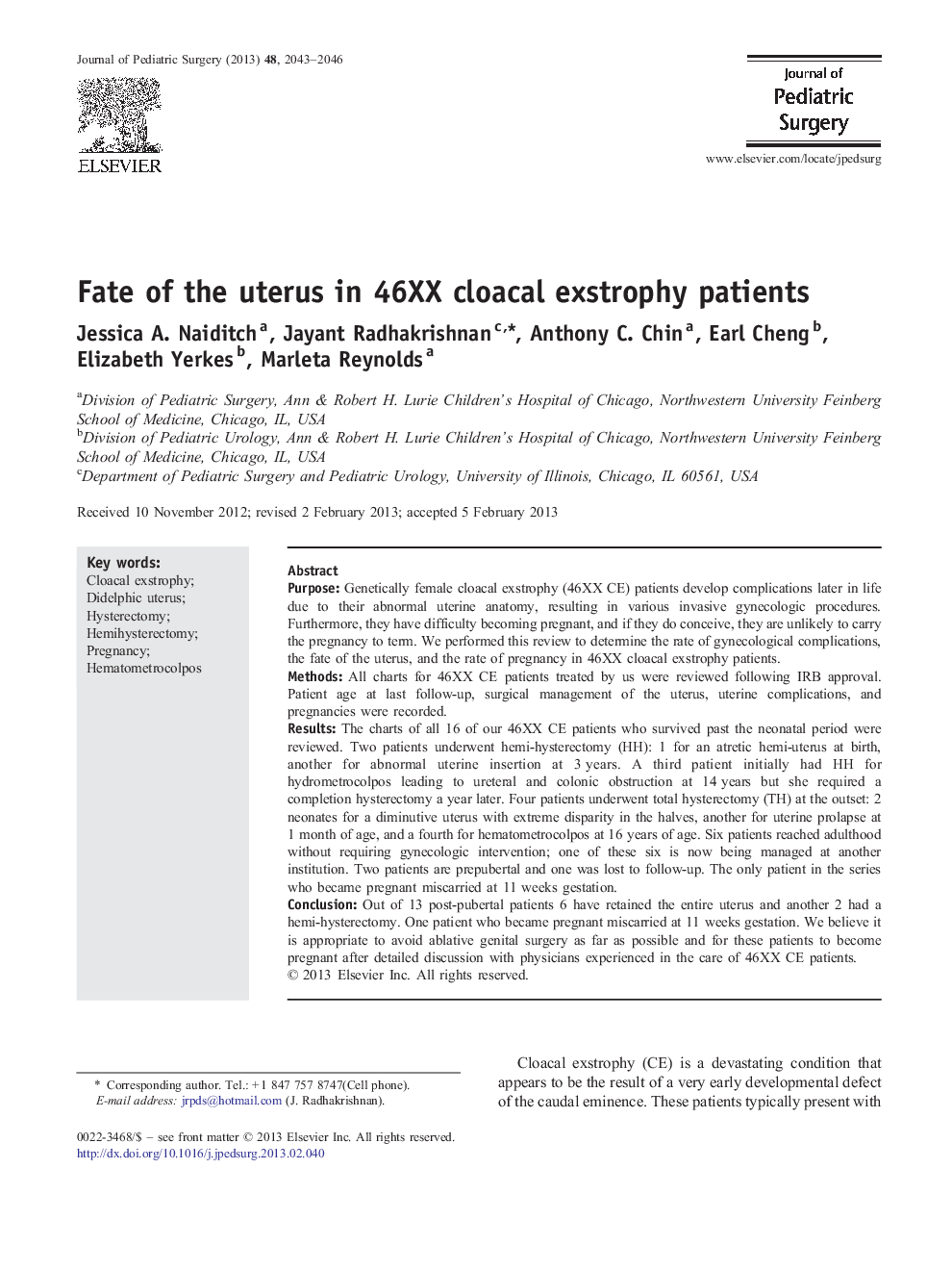| Article ID | Journal | Published Year | Pages | File Type |
|---|---|---|---|---|
| 6217179 | Journal of Pediatric Surgery | 2013 | 4 Pages |
PurposeGenetically female cloacal exstrophy (46XX CE) patients develop complications later in life due to their abnormal uterine anatomy, resulting in various invasive gynecologic procedures. Furthermore, they have difficulty becoming pregnant, and if they do conceive, they are unlikely to carry the pregnancy to term. We performed this review to determine the rate of gynecological complications, the fate of the uterus, and the rate of pregnancy in 46XX cloacal exstrophy patients.MethodsAll charts for 46XX CE patients treated by us were reviewed following IRB approval. Patient age at last follow-up, surgical management of the uterus, uterine complications, and pregnancies were recorded.ResultsThe charts of all 16 of our 46XX CE patients who survived past the neonatal period were reviewed. Two patients underwent hemi-hysterectomy (HH): 1 for an atretic hemi-uterus at birth, another for abnormal uterine insertion at 3Â years. A third patient initially had HH for hydrometrocolpos leading to ureteral and colonic obstruction at 14Â years but she required a completion hysterectomy a year later. Four patients underwent total hysterectomy (TH) at the outset: 2 neonates for a diminutive uterus with extreme disparity in the halves, another for uterine prolapse at 1Â month of age, and a fourth for hematometrocolpos at 16Â years of age. Six patients reached adulthood without requiring gynecologic intervention; one of these six is now being managed at another institution. Two patients are prepubertal and one was lost to follow-up. The only patient in the series who became pregnant miscarried at 11Â weeks gestation.ConclusionOut of 13 post-pubertal patients 6 have retained the entire uterus and another 2 had a hemi-hysterectomy. One patient who became pregnant miscarried at 11Â weeks gestation. We believe it is appropriate to avoid ablative genital surgery as far as possible and for these patients to become pregnant after detailed discussion with physicians experienced in the care of 46XX CE patients.
